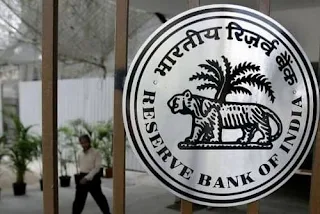
- This annual report complies with Section 36(2) of the Banking Regulation Act of 1949 and is a statutory publication.
- Lower slippages and a drop in outstanding GNPAs as a result of recoveries, upgrades, and write-offs were the main contributors to this decline. The report details the banking sector's performance so far in 2021–22 and 2022–23, including cooperative banks and non-banking financial institutions.
- After a gap of seven years, the Scheduled Commercial Banks' (SCBs') consolidated balance sheet displayed double-digit growth in 2021–22, driven by credit growth that surged to a ten-year high in the first half of this fiscal year ending in March 2023. (H1:2022-23).
- At the end of March 2022, the capital-to-risk-weighted assets ratio (CRAR) of SCBs increased from 16.3% at the end of March 2021 to 16.8%.
- For PSBs (Public Sector Banks), written-off loans were a major factor in the decline in NPAs. The primary factor in PVBs' (private banks') improved asset quality was the strengthening of loans. Gross NPAs were 5.8% as of March 2022, which is lower than the 7.3% in March 2021. The net NPA ratio decreased from 2.4% to 1.7% as of March 2022.
- Banks and their deposit rates:
- The report claims that in order to accommodate an increase in credit demand, banks may need to boost deposit rates even further. This is a result of a rise in credit growth in 2021–2022. In the two weeks from December 2021 to December 2022, loans from Indian banks increased by 17.5%, while deposits increased by 9.9%.
- Pradhan Mantri Jan Dhan accounts:
- The Pradhan Mantri Jan Dhan Yojana (PM-JDY) accounts have also witnessed an increase in deposit base rates over the past eight years. By August 2022, out of a total of 462.5 million PMJDY accounts, 81.2% were operative. Zero balance accounts made up just 8.2% of all PMJDY accounts.
- Banking Frauds value substantially goes down:
- Although there were more banking frauds in FY21-22, the total amount involved was more than halved. Banks recorded 9,102 frauds totaling Rs 60,389 crore in FY22 as opposed to 7,358 frauds totaling Rs 1.37 lakh crore in FY21.
- The number of frauds involving loans or advances has been declining; FY22 reported 1,112 frauds totaling Rs 6,042 crore, down from 1,477 frauds totaling Rs 14,973 crore in FY21.
- Private banks and credit growth:
- Due to a rise in demand, PVBs overtook PSBs in September 2022 by raising their proportion of total credit from 37.5% to 38.4%. At the end of September 2022, the loan portfolio of private sector banks rose 20.6% year over year (year on year), according to an assessment by CARE Ratings. For PSBs, it increased by 18.7% over that time.
- Realization through the IBC mechanism:
- Financial creditors (FCs) who started corporate insolvency resolution proceedings (CIRPs) under the Insolvency and Bankruptcy Code recovered nearly 201 percent of the liquidation value up until September 2022.
- Debt Recovery Tribunals and SARFAESI (Securitization and Reconstruction of Financial Assets and Enforcement of Security Interest) have produced recovery rates that are on par with the IBC system.
- The recovery rate under the IBC was 23.8%, compared to 25.7% and 22.5% under the SARFAESI Act and DRTs, respectively.
- Static context:
- GNPA stands for gross non-performing assets. GNPA is an absolute amount. It tells us the total value of gross non-performing assets for the bank in a particular quarter or financial year as the case may be.
- The scheduled commercial banks are those financial institutions that are included in the second schedule of the RBI Act of 1934 and conduct regular banking operations, including accepting deposits, extending loans, and providing other banking services.
Question:
Q.1 The GNPA of the Indian Bank decreased from 9% to how much percent, according to the most recent RBI Report on Trends and Progress of Banking in India, 2021–22?
a. 6%
b. 8%
c. 5%
d. 6.5%
a. 6%
b. 8%
c. 5%
d. 6.5%


